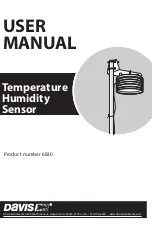
99
31-00083—02
ABBREVIATIONS AND
DEFINITIONS
Abbreviations
AHU
- Air Handling Unit; the central fan system that includes
the blower, heating equipment, cooling equipment, ventilation
air equipment, and other related equipment.
Box
- A VAV terminal unit box.
CAV
- Constant Air Volume; a TUC that maintains a fixed air
flow through the box.
CO
- Carbon Monoxide. Occasionally used as a measure of
indoor air quality.
CO2
- Carbon Dioxide. Often used as a measure of indoor air
quality.
cUL
- Underwriters Laboratories Canada.
DDF
- Delta Degrees Fahrenheit.
D/X
- Direct Expansion; refers to a type of mechanical cooling
where refrigerant is (expanded) to its cold state, within a heat-
exchanging coil that is mounted in the air stream supplied to
the conditioned space.
LonWorks® network.
Echelon®
- The company that developed the LON® bus and
the Neuron® chips used to communicate on the E-Bus.
EMI
- Electromagnetic Interference; electrical noise that can
cause problems with communications signals.
EMS
- Energy Management System; refers to the controllers
and algorithms responsible for calculating optimum
operational parameters for maximum energy savings in the
building.
Floating Control
- Refers to Series 60 Modulating Control of
a valve or damper. Floating Control utilizes one digital output
to pulse the actuator open, and another digital output to pulse
it closed.
IAQ
- Indoor Air Quality. Refers to the quality of the air in the
conditioned space, as it relates to occupant health and
comfort.
I/O
- Input/Output; the physical sensors and actuators
connected to a controller.
K
- Degrees Kelvin.
OEM
- Original Equipment Manufacturer; the company that
builds the VAV boxes.
NEC
- National Electrical Code; the body of standards for safe
field-wiring practices.
NEMA
- National Electrical Manufacturers Association; the
standards developed by an organization of companies for safe
field wiring practices.
Node
- A Communications Connection on a network; a
Controller is one node on the E-Bus network.
NV
- Network Variable; controller parameter that can be
viewed or modified over the network.
Module; used to allow user-adjusted setpoints to be input into
the Controller.
PWM
- Pulse Width Modulated output; allows analog
modulating control of equipment using a digital output on the
controller.
RTD
- Resistance Temperature Detector; refers to a type of
temperature sensor whose resistance output changes
according to the temperature change of the sensing element.
TOD
- Time-Of-Day; the scheduling of Occupied and
Unoccupied times of operation.
TCU
- Terminal Control Unit; industry can refer to VAV box
controllers such as the AscLon VAV as TCUs.
TUC
- Terminal Unit Controller; Same as TCU.
VA
- Volt Amperes; a measure of electrical power output or
consumption as applies to an ac device.
Vac
- Voltage alternating current; ac voltage rather than dc
voltage.
VAV
- Variable Air Volume; refers to either a type of air
distribution system, or to the VAV Box Controller that controls
a single zone in a variable air volume delivery system.
Wall Module
- The Space Temperature Sensor and other
optional controller inputs are contained in the
Zio
- The TR71/75 LCD wall module.
Zone Control Definitions
Variable Air volume ATUs
Variable air volume (VAV) ATUs are commonly called VAV
boxes. Each VAV box has a controller that controls the
temperature of a room or zone by modulating a damper in the
VAV box to vary the amount of conditioned air supplied to the
zone rather than changing the temperature of the conditioned
air. They are used in larger buildings that have many zones
along with a central air handling fan that supplies conditioned
air via a pressurized main air duct system. The central air
handling fan has a separate equipment controller that controls
discharge air temperature, humidity, and supply duct static
pressure.
Air Terminal Unit Control
Air terminal units (ATUs) regulate the amount of conditioned
air delivered to satisfy the temperature
requirements of a room or space. ATUs are classified by air
handling system design and are available in several
configurations. ATUs may be of variable air volume or constant
volume design, and may be used in single-duct or dual-duct
air handling systems. ATU controls can be as basic as a room
thermostat controlling a damper or a more complex direct
digital controller operating a damper, a terminal fan and
enabling a reheat coil. In all cases, each ATU has a controller
that is used to control the environment of the room or space.





































